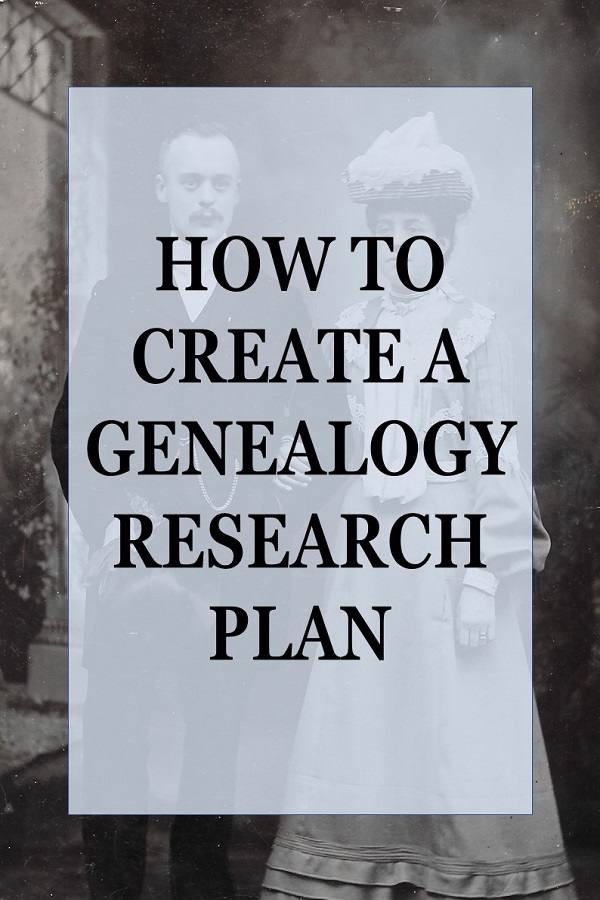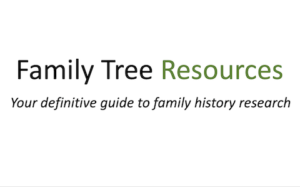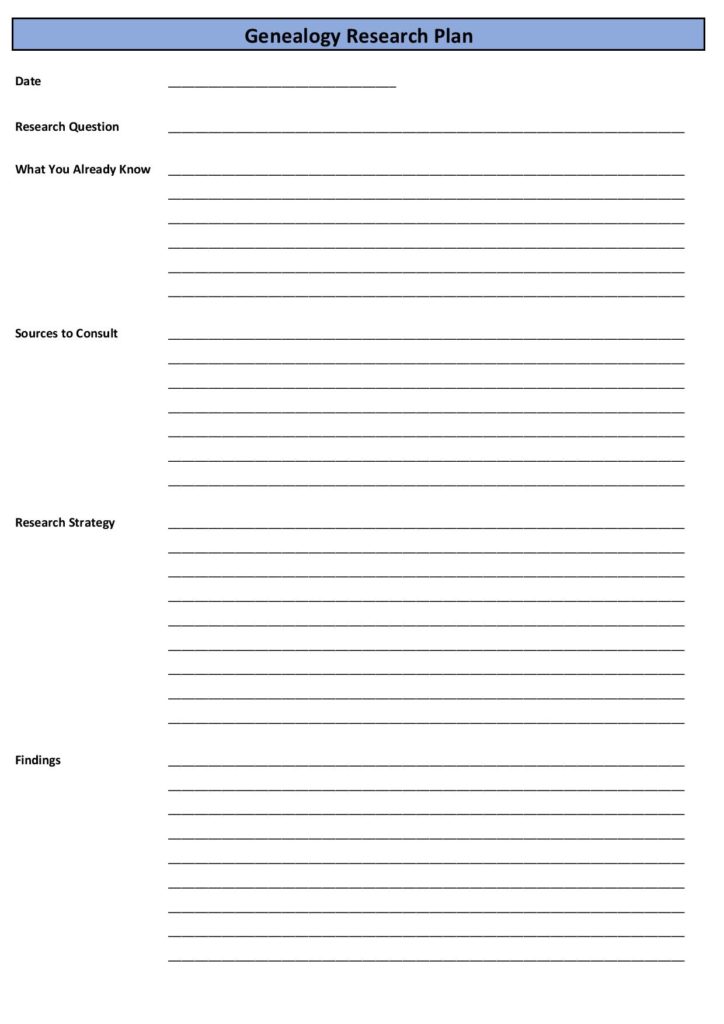
A genealogy research plan can help you to make your research as efficient as possible, and can even help save you time once you are researching your family history, either online or in a record office.
A good plan can also help you to remain focused on the question you wish to learn the answer to, and not to become too distracted.
I must confess that when I first started researching my family history, I had notes all over the place, and kept becoming distracted at the Record Office by other items and so it took me a long time to organise my research when I returned home (this was long before records were made available online!!).
I decided to construct a genealogy research plan before I conducted research so this did not happen in the future, and I want to share this with you to make it easier for you to conduct your own research, and save you from going down the rabbit hole like me!!
Write Down What You Want To Know When Studying Your Family Tree
The first question you should ask yourself when you are creating a genealogy research plan is what you want to learn about your relative. Do you want to find out his/her marriage date, or his/her spouses’s name? Do you want to discover where your ancestor was born? Do you want to prove or disprove a family myth?
Whatever question you want to answer about your relative should be the first item you include, so you know what your objective is.
What Do You Already Know About Your Ancestors?
Once you have formulated your research question, you should turn your attention to what you already know about your ancestor as this can help you to avoid searching for the same information again.
If you already have any birth, marriage or death certificates, or have found your ancestor in a census return, it may be prudent to take these with you to the Office or at least make notes regarding the pertinent information.
Write Down Sources to Consult in a Record Office or Online
One important thing to consider when writing down the sources you wish to consult is whether the source is available online or at a Record Office.
If you wish to consult the source at a Record Office, you should first search their online catalogue to see if they hold it. If you cannot find the source in their online catalogue, check to see if all sources are listed. If not, it may be best to contact them to ask them if they hold this particular record. Another option is to see if they hold the source on microfilm at a Family History Centre.
If you find the source is available online, you should check to see if you have to pay to access the website. Record Offices usually provide free access to websites such as Ancestry or FindmyPast.
You should also list the sources you wish to consult ready for when you arrive at the Record Office. It is best to order documents in advance of your visit so they are ready for you when you arrive, which can save you a lot of time in the Office.
For more information about making the most of a trip to an Archives, please read my article: what to expect when you visit a record office.
Many sources are available online through sites such as Ancestry and FindmyPast, so it is prudent to note these down in your plan as well so that you still conduct efficient research, even when researching at home.
You may find, of course, that the source you wanted to consult has not withstood the test of time, and no longer exists, either online or in the the Record Office. Although a research plan cannot prepare you for that sad realisation, it does ensure that you are thorough in your research and leave no stone unturned.
I had that problem myself when I wanted to check the marriage licence of my ancestors John Harris and Elizabeth Roddis (Rodhouse). Unfortunately, the marriage licence no longer exists, so I now have to find an alternative way of checking Elizabeth’s parentage.
In What Order Do You Want to View Records in the Archives?
It is best to order the documents you wish to consult in order of relevance to your initial research question – which source is likely to contain, or help to, answer the question you are asking?
Another important thing to remember when deciding which order you wish to consult the sources in is to consider how easy they are to access. If a source is available online, and you do not need to visit an Archive to peruse the record, it is probably best to consult these records first.
Another factor is to consider how much you will have to pay to consult the record, and whether you will be charged for taking a copy of the record at a Record Office.
Making Notes is Crucial When Researching Your Family History
Wherever you wish to consult the document in question, it is important to make as many notes as you can with regard to the source and the information contained within so that you know that you have already gleaned all the information you can from the source so that you will probably not have to consult the source again in the future.
If you are planning on sharing your research with other people, this also makes it easier to share the information with them.
Schedule Time to Go Through Your Family History Research
As you will no doubt be aware, researching your genealogy is not something you can do in five minutes. Researching takes a lot of time, and you cannot possibly download and/or look at everything you need at the same time. Therefore it is prudent to set aside time to work on your genealogy research, perhaps taking time to review everything you already know and asking yourself what question you want to answer before conducting any research.
It is also important to spend some time reviewing what you have found when you have finished the research session so that you know exactly what you have discovered so can continue where you left off more easily if you have to stop before you complete your research.
Genealogy Research Plan Template
I have designed a template that you can use to add in your own details including:
- Research question
- What you already know
- Sources to consult
- Research strategy
- Findings
If you find there is not enough room to write down all the information you have discovered, or you wish to add more information such as the person you are looking for, source reference, where the source was consulted, and the years of your search, please consult my genealogy research log, which you can use to fill in all these details. This can be cross referenced with your genealogy research plan.
Example Genealogy Research Plan – Eleanor Scrivener
Objective
Find out if Eleanor Scrivener, who married Edward Campion on 2 July 1795 in Potterspury, Northamptonshire, was the daughter of Joseph Scrivener
Known Facts
- Marriage date of Eleanor Scrivener
- Joseph Scrivener and Elizabeth Devonshire married on 5 April 1759 in Banbury, Oxfordshire. Record stated that Joseph came from Potterspury, and Elizabeth from Banbury
- Joseph and Elizabeth Scrivener had children baptised in Potterspury Independent Chapel between 1760 and 1764 – Joseph 16 February 1760, Robert 29 December 1762, Richard 30 June 1764.
- Eleanor Campion’s death certificate from 1837 stated that she was 68 when she died, giving her a year of birth of approximately 1769
- Joseph Scrivener was buried on 25 July 1807 in Potterspury, Northamptonshire. Also found on a website a transcription from a plaque on the wall of Potterspury church stating that he died on 21 April 1807
Difficulties
Baptism Records from 1764 to 1782 for Potterspury Independent Chapel are missing – could Eleanor have been baptised in this period?
Hypothesis
Eleanor was the daughter of Joseph and Elizabeth Scrivener, and was baptised in the missing period
Sources to Consult
Wills in Northamptonshire Record Office
Online Wills of the Prerogative Court of Canterbury (Ancestry)
Research Strategy
Look in the wills at Northamptonshire Record Office to see if Joseph left a will. If there is no record of Joseph’s will in the Office, to then check the wills from the Prerogative Court of Canterbury on Ancestry just in case.
Answer – Was the Objective Achieved?
Joseph did indeed leave a will in the Prerogative Court of Canterbury, which stated that he left money to a daughter Eleanor. This was the proof that Eleanor was indeed Joseph’s daughter, and research could continue.
In many respects the will did not only answer the original research question, it also answered an unspoken question that was just how many children did Joseph and Elizabeth have? The answer, as shown by the will, was that they had seven children. Ann, Thomas and John, who were all mentioned in the will, must also have been baptised in the missing period, adding to Eleanor and the three other children I had already known about, Joseph, Robert and Richard. Quite a family!!
Although my research plan brought dividends because I found the information I was looking for, do not despair if your research plan does not bring you the answer you are seeking. A research plan can easily be adapted to take into consideration anything you may have found that may help you in the future.

